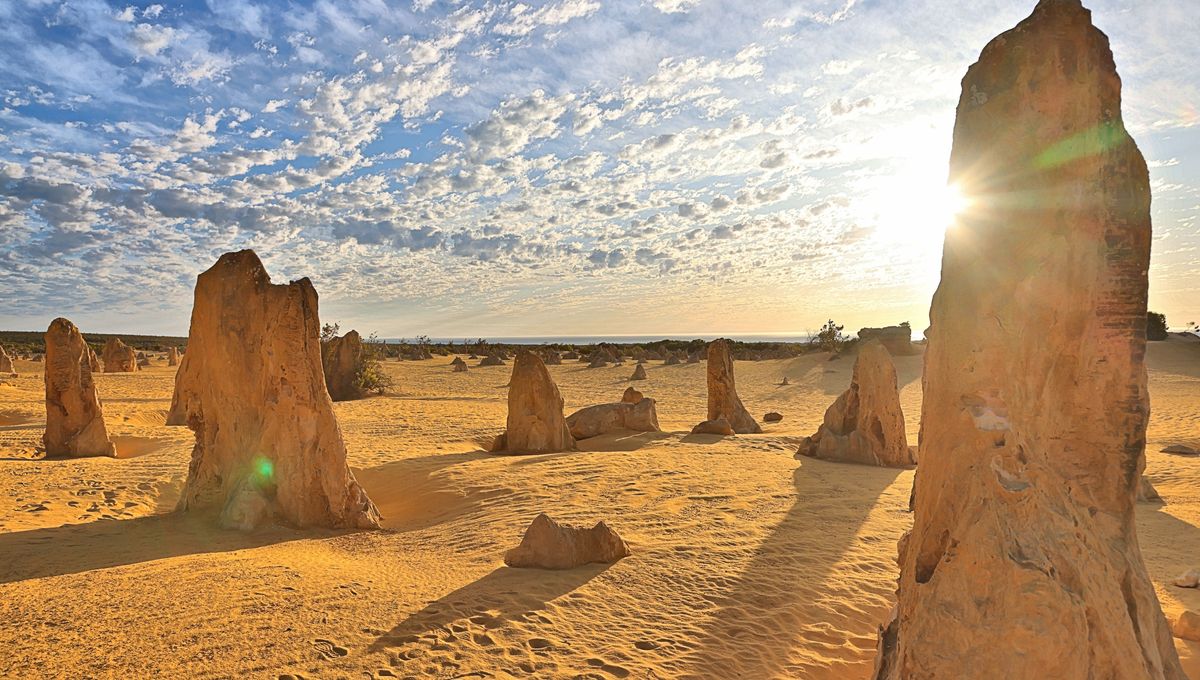
Head to the Pinnacles desert in Western Australia, and you might just think you’ve stumbled onto a Star Wars set, with a vast field of towering spikes of rock sticking out from the dark yellow sands. But while they definitely aren’t the remnants of moviemaking, exactly how and when these strange structures formed has long been the subject of debate.
Perhaps the darkest theory comes courtesy of the Yued people, who believe that the pillars are the hands and fingers of young men who were warned by elders not to enter the area, but did so anyway, and were sucked up into the sand as a result. This is why you should listen to your grandma, folks.
Less spooky, but equally interesting are the three main theories put forward in scientific debate, the first being that the karst pillars were formed by gradual, but extensive weathering of Western Australia’s Tamala Limestone. Though acidic waters (such as rain) first made small, cylindrical structures called solution pipes, these became bigger over time, leaving us with the Pinnacles.
The second and third theories both involve plants; one suggests that they’re the result of buried tree casts filled with calcium-rich limestone that then became exposed by wind erosion, while the other involves root casts, proposing that plants accumulated calcium-rich limestone in their roots while alive and it remained after they died.
However, a new study in Science Advances has added its own spin on existing theories – and has also put forward a date for the formation of the pillars.
According to Dr Matej Lipar and colleagues, the Pinnacles were formed about 100,000 years ago during a particularly soggy part of this region’s history. They were able to determine this from iron-rich nodules present on the pillars, which act like a geological time stamp.
“We found this period was locally the wettest in the past half-million years, distinct from other regions in Australia and far removed from Western Australia’s current Mediterranean climate,” said Lipar in a statement.
“An abundance of water during this time caused the limestone to dissolve, forming the distinctive pillars of the Pinnacles and creating the ideal environment for the iron nodules to develop.”
While a significant finding, study co-author Dr Milo Barham told ABC News that many questions about the Pinnacles still remain unanswered, particularly as to what made the difference between a pillar forming and not dissolving like the limestone around it.
Was it random, or “was there some sort of structure above that was protecting fluid ingress into that piece of limestone?” he posed.
“These are some of the things that I guess we still need to find out. There’s plenty of mystery left in the Pinnacles to explore.”
Source Link: How Did These Strange Structures In The Desert Of Western Australia Form?